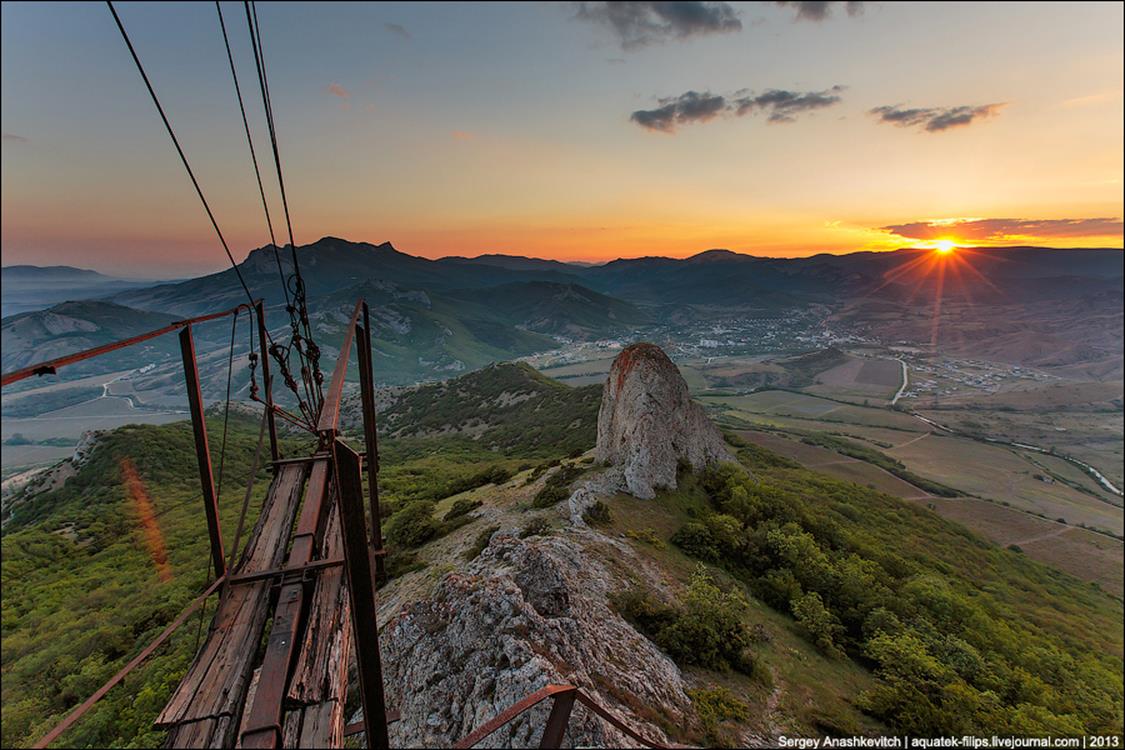Abandoned lunar station in the Crimea
This is a story about one of the coolest, most unusual and least visited abandoned sites of the Crimea.
Firm or dusty?
This question was one of the most important for the Soviet space scientists in the early 1960s and it was about the surface of the Moon.
The Soviet Union was working intently on its lunar program in those years and it was supposed to get ahead of Americans and become the first nation to launch a spacecraft to our planet’s satellite.
However, nobody knew anything about the structure of the lunar surface and there were two hypotheses, the first one saying that the Moon was covered with a thick layer of loose cosmic dust, while the second stated that the lunar surface was firm.
That is why an artificial Moon appeared in the Crimea in 1964.
A lunar station was built on the top of Mt. Balaly-Kaya, and at its foot a radiotelescope was installed, and with their help it was finally determined that the lunar surface was firm and it was possible to launch a Lunokhod (a lunar rover) and a manned mission to it.
This particular mountain and this particular place were chosen for a reason. The thing is, the experiment was based on a method of comparison of radio waves coming from the real Moon with those from the artificial Moon, using the latter for reference.
For conducting the experiment, a specific type of landscape was required — the artificial Moon needed to be as high above the horizon as the real one, and the angle of the telescope’s position needed to be identical.
The top and the foot of Mt. Balaly-Kaya were perfect for achieving these goals, and the experiments could be carried out several times a day for a few months.

For carrying out the experiments a specially designed metal framework was installed on the mountain top with an artificial Moon mounted on it.
The Moon was actually a black disc 5 m (16 ft) in diameter covered in carbonic foamed radar absorbing material.
The structure was actually a working model of an absolutely black body for centimetric waves.
As the result of this research, precise determination of characteristics and compounds of lunar soil was achieved and a contemporary model of the structure of the uppermost layer of the Moon was created.
It was discovered that the temperature of the Moon is due to the decay of radioactive elements (uranium, thorium and potassium) in its insides.

A radiotelescope was installed about 550 m (1800 ft) away from the artificial Moon, transmitting the waves to the disc and to the actual Moon.
Now there’s only the base of the telescope left.

This is how this structure looked like during the 1960s at the peak of the research.

Today the site is completely abandoned, but thanks to it being located on the Karadag national park territory, it hasn’t been sawn up for scrap metal and it has been preserved like this at least.

There is a metal ladder leading straight to the upper platform.

The platform under the beams that used to support the disc is quite small, and is fixed to metal supports that go right into the cliff.

The construction is still quite sturdy, but when walking on it, you realize that it won’t be here for much longer — everything is wobbly and springs under your feet.

The guy wires. Some are still completely operational.

The wooden logs and the flooring boards are also starting to decay.

A fascinating combination of a deteriorating human creation and the eternal creation of nature.
A dying urban object with unbelievably beautiful landcapes in the background.

The views of the Karadag and the surrounding valleys.

There are vineyards, the Black sea, the Karadag national park and some light-colored houses down there.
That’s where the telescope was located as well as some laboratory trailer houses.

The remains of the metal framework. Some of the wires are already torn off, as you can see.

One of the metal beams going up to the sky from which the artificial Moon disc was suspended.

The space where the disc was suspended.

These are the graphite tiles that the artificial Moon was covered with.

One of the guy ropes supporting a tall beam

The remains of the building where the necessary equipment was kept.
It is surprising to see parts that are so well preserved in an object that has been abandoned for so long.

You can watch an unbelievably beautiful summer sunset from here.

Images by Sergey Anashkevich, reproduced with permission






